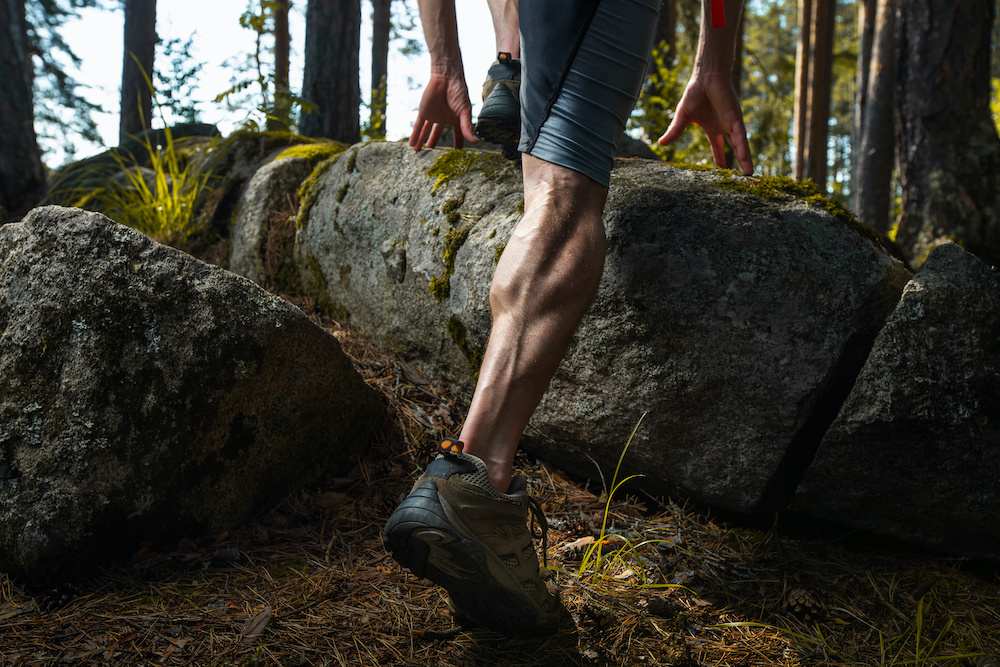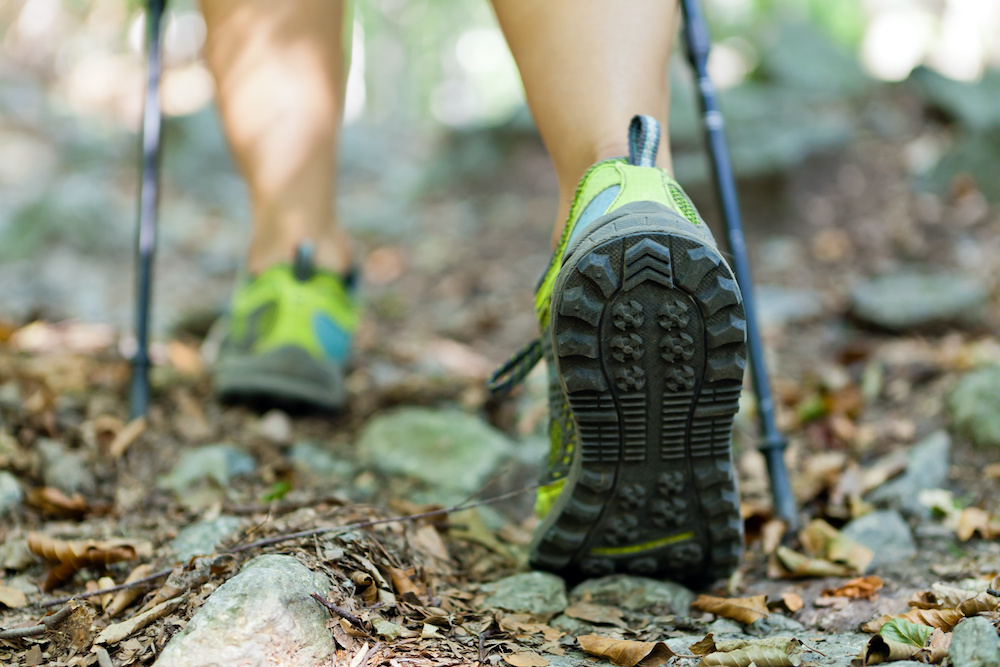
Trail running and hiking shoes have similarities, from how they look to what their features are.
On the other hand, if you look closely, you’ll find that they also have many differences, which started trail running shoes vs hiking shoes debates.
Until now, most people are still confused if they should just buy a shoe for trail running and hiking or get two separate pairs.
If you are a hiker, a trail runner, or just someone who casually goes up the mountain or joins your friends on the trail, you need decent shoes that would provide both comfort and protection.
To learn more about them, let’s talk about their main differences and a couple of simple tips on choosing the right pair.
Are Trail Running and Hiking the Same?
Before we talk about the differences between hiking and trail running shoes, it would be better to understand the differences between hiking and trail running first.
You can find similarities between them, but each one provides a different experience.
Hiking is more relaxed since you don’t have to run on the trail. Instead, you can take your time and bring all the gear you want because you are just walking.
When hiking, you can enjoy the scenery at your own pace.
Trail running is different because you need to forego almost all the heavy gear and focus on running.
If you are going to bring something with you, it should only be important stuff so as not to add to the effort you’d need to exert.
Trail Running Shoes vs Hiking Shoes
For the record, you can wear any type of shoe when trail running or hiking. You can even wear your sneakers if you want to.
In some way, the kind of footwear you wear when hiking or trail running is just a matter of preference, especially for people who only want to try it once.
Buying trail running or hiking shoes won’t be a good idea if you don’t plan to do it regularly.
These shoes are pricey, so you should only invest in a pair if you are serious about taking them on.
To make a more direct comparison between the two, let us talk about the main features that you should look for in a trail running or hiking shoe.
1. Weight
In terms of weight, trail runners are clearly at an advantage because they are lighter.
Originally, hikers used boots for hiking because they provide protection to their feet. However, more protection means that the boots would be heavier.
Hiking shoes are the lighter version of hiking boots, and they have more limited protection, as well. However, they are still a bit heavy for some people.
Hiking boots usually weigh over two pounds, while hiking shoes hover around 1.5 pounds.
Trail runners, on the other hand, are slightly over one pound, which makes them an excellent choice for people who don’t want the extra weight on their feet.
2. Protection and Support
Some hikers prefer using hiking shoes because they offer better support and protection.
Although trail runners provide certain amounts of support and protection, they would not be enough for hiking.
This is because hiking would require you to carry a lot of things, which means more pressure on your feet.
Hiking shoes have a stiffer midsole, sturdier outsole and upper, and other features, such as toe cap and rubber rand.
Combined, these features offer extra support and protection that are almost at par with what hiking boots provide.
If your feet are very sensitive and are susceptible to injuries, the best choice would be hiking shoes, regardless if you are trail running or hiking.
This is because it provides a good balance of weight and protection.
If you want to feel the nature under your feet, using trail running shoes would be a better choice since it provides less support and protection.
3. Durability
In terms of durability, hiking shoes are your best bet.
The nature of hiking requires you to wear shoes with ample protection. As such, you should find a durable pair to withstand different terrains and weather conditions.
More often than not, hiking would also take several days, and wearing trail running shoes won’t be ideal in harsh environments.
Hiking shoes are usually made from durable nylon fabrics or leather, and they have protective toe caps and slightly stiff midsoles.
Compared to trail runners, hiking shoes would fare better during hikes. They would be able to withstand abrasive and rugged terrains better.
In comparison, trail runners are very lightweight since most manufacturers sacrificed protection and durability for weight.
If you want to consistently hike and plan to wear trail runners for that comfortable and lightweight feel, be prepared to replace your shoes after several uses.
They would not be able to survive the harsh environments when hiking.
4. Traction
Hiking shoes are also at an advantage when it comes to traction since they are made to provide a better grip on different surfaces.
Trail runners are completely different in this regard because you need to be more specific on the soles depending on the type of terrain.
Hiking shoes and trail running shoes differ in pattern and tread depth, too.
Hiking shoes have the same tread with hiking boots, which is focused on the excellent grip for a wide variety of surfaces and terrains.
Trail runners usually have different sole patterns, and they excel only for a specific type of terrain.
Some shoes are made for muddy or loose ground; others come with a shallower tread for rocky surfaces.
If you are sticking to just a single type of terrain, it is better to use a trail running shoe.
5. Comfort
Both trail running shoes and hiking shoes focus on comfort. After all, no one would be wearing a pair of shoes if they are not comfortable.
When it comes to comfort, both hiking and trail running shoes can be a good choice, but it would still depend on your situation.
However, when carrying heavy loads, a hiking shoe would be a better option, as it offers more protection and stability.
If you are going to run on trails, you need a lighter shoe, so it would be more comfortable to wear trail running shoes.
6. Breathability
Trail runners are more breathable than hiking shoes. Most hiking shoes come with waterproof features, so they are less breathable.
All of the extra protection included in hiking shoes can also hinder the air from entering the shoe.
Trail runners have thinner materials, so it won’t come as a surprise if they are more breathable.
Also, they often have mesh uppers that can prevent debris from entering the shoe and provide a decent amount of breathability.
When hiking during summer months, the ventilation from trail running shoes would be the wiser choice.

Tips in Choosing Trail Running Shoes and Hiking Shoes
If you already have a type of shoe in mind, there are a few things you need to know.
Choosing Trail Running Shoes
1. Try Several Pairs
If it’s your first time buying a pair of trail running shoes, we suggest that you go to the nearest shopping center to try out several pairs.
It is not easy to decide on a pair of shoes without trying them on since you need to know if they would fit your feet perfectly.
Shoe brands also have different sizing, so knowing the size of your feet won’t help much. You also need to know if the shoe would fit a wide or narrow foot.
2. Determine Stack Height
Stack height pertains to the amount of material under your shoes.
A higher stack height means that the shoe provides better protection underneath. On the other hand, a lower stack height allows you to feel the ground under your feet.
You should choose based on your current situation.
A higher stack height will be a good choice for people prone to injuries, while a lower stack height is perfect for people who want a natural feel.
3. Try to Avoid Waterproof Features
If you are not planning to run on rainy days, there is no reason to look for a trail running shoe with waterproof features.
Your feet would become sweatier because the waterproof membrane would prevent the air from entering the shoe.
4. Lug Length
For lug length, you need to research about the trails you plan to run.
If the terrain is full of stones and hard dirt, a short lug pattern would be a good choice. If the terrain is muddy or has soft surfaces, deeper lug patterns would be a better alternative.
5. Foam or Rock Plate
Foam can absorb shock, and rock plates offer a more natural feel when running on the ground. Take note of the type of terrain you are going to run on and see if it is rocky or soft.
Foam is an excellent choice for rocky trails, while rock plates are better for soft ground.
Choosing Hiking Shoes
1. Material
Hiking shoes come in different materials, so you should know their pros and cons before buying.
Synthetics
Synthetic hiking shoes are often made from nylon, polyester, or polyurethane. They come in different thicknesses and densities, as well.
Some synthetics can mimic the properties of leather, and others are lighter and more breathable.
Nubuck and Suede
You will find hiking shoes made of nubuck and suede, which is buffed leather. This material is softer and more flexible.
Full-Grain Leather
Full-grain leather is the most durable material. It is abrasion-resistant and water-resistant. The problem with this material is it is also the heaviest and the least breathable.
2. Fit
Look for the perfect fit when it comes to hiking shoes because it would be hard to move around if the shoe is too small or too big.
Here are some of the tips on how you can select the right fit.
- Go to the mall after working for a whole day. Your feet are already swollen by this time, so you can easily get the right size of your feet.
Your feet will be swollen while hiking, so buying a shoe when they’re already swollen will provide plenty of room for your feet once it expands.
- The heel should be locked in firmly. Lace the shoe first and move around to make sure that it is not too tight.
- Leave about half a centimeter on the big toe. It is also related to the swelling of your feet, and the shoes should have plenty of room when it grows.
- Bring your hiking socks with you and wear them before trying any hiking shoes.
3. Arch Support
When looking for hiking shoes, look for a model that provides sufficient arch support.
You can check this by bending the footwear in the middle. It should not bend, but the area at the forefoot should be flexible.
4. Midsole
The goal of buying a hiking shoe is to get all the protection that you can. Look for hiking shoes with polyurethane midsoles, as they provide support and durability.
You should opt for compression-molded EVA to provide a lightweight cushioning to the shoes.
5. Weight
You are buying a hiking shoe instead of a hiking boot because you want footwear that can protect your feet without being too heavy.
Running shoes weigh around 1.75 pounds, while hiking boots usually weigh 3.75 pounds.
If you are going to look for hiking shoes, you can start with two pounds. Don’t go over the three-pound mark because that would be too heavy for a hiking shoe.
Wrapping Up
There is no one-size-fits-all option when it comes to footwear. Some might prefer a lighter trail running shoe for both hiking and trail running, and others would choose the heavier hiking shoe.
You should go for whatever footwear you want and think is the best choice.
Choosing a specific shoe would depend on your preferences anyway, so you should think about your situation before buying it.
If you are still confused with all of the trail running shoes vs hiking shoes debates, just remember that trail running shoes are lighter with less protection, and hiking shoes are a bit heavier with more support and protection.
